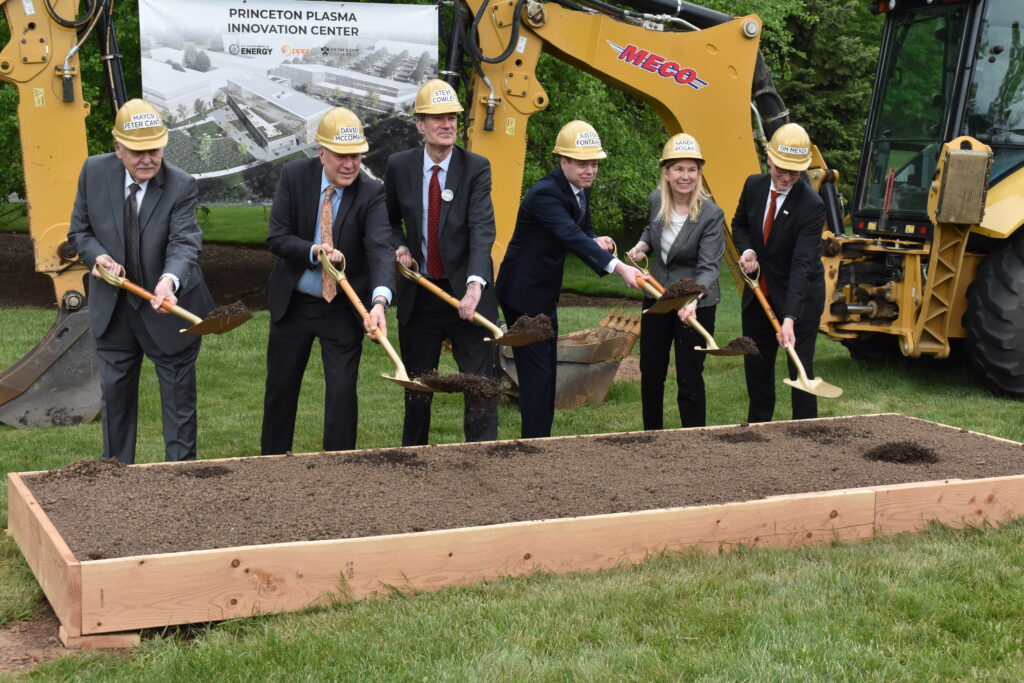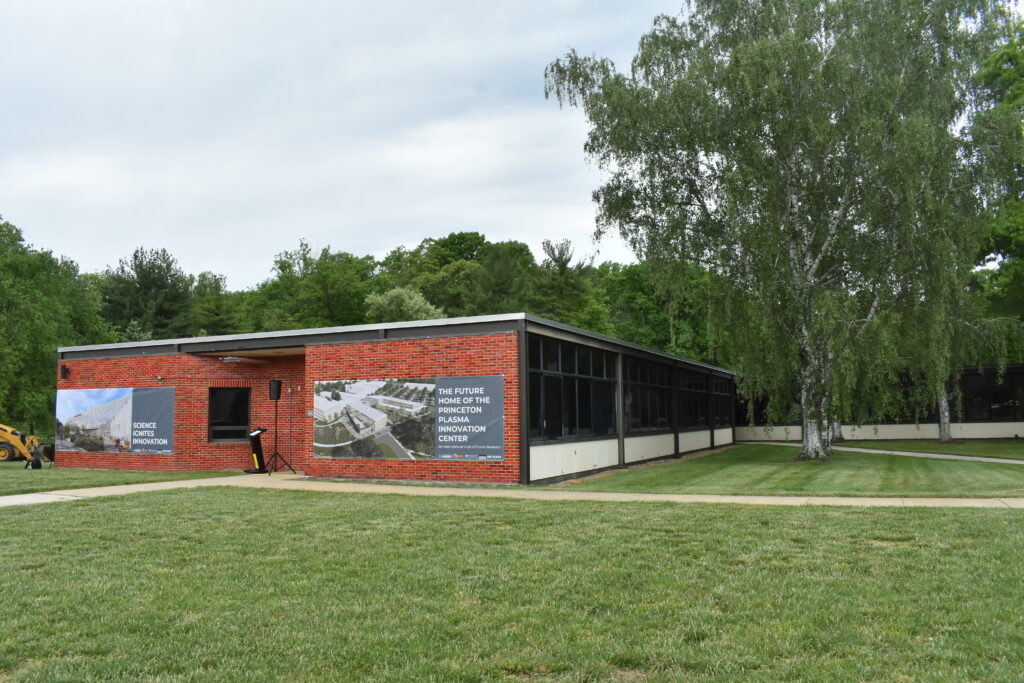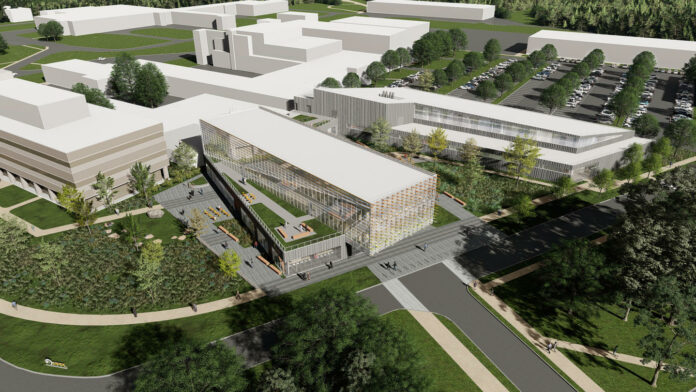Ground has officially broken for the Princeton Plasma Innovation Center (PPIC), a new laboratory facility at Princeton Plasma Physics Laboratory (PPPL).
The PPPL, a U.S. Department of Energy (DOE) national research laboratory, is managed by Princeton University and has had a focus on fusion energy.
The groundbreaking on May 9 marks more than 40 years since the groundbreaking of the Tokamak Fusion Test Reactor on site.
“This is magic,” PPPL director Steve Cowley said. “It is a great day for the lab, great day for Department of Energy, great day for (Princeton University).
“This building is going to be the centerpiece of the diversification of the lab to really help the American economy and drive for sustainability.”
Cowley noted that the lab is moving into areas they weren’t into before and strengthening their commitment to fusion energy. The PPIC building will push forward artificial intelligence and high-performance computing for fusion, he said.
When the building is complete, it will support new research in microelectronics; quantum sensors and devices; and sustainable sciences.
“The lab had one mission up till now and that was the delivering of fusion energy,” Cowley said. “Now that mission has broadened really because we need to serve the nation and we have the skills to do that.”

The PPPL construction of the new PPIC costs close to $110 million and is expected to be completed in 2027.
“This building has been a long time in the making,” Cowley said. “We have been needing a new building probably for decades to be honest.”
PPIC is not only set to consist of new small, medium and large laboratory space for PPPL, but also provide new office space and house PPPL’s public engagement.
The building is replacing two older buildings, the Theory wing and part of the Lyman Spitzer Building Administration wing. Theoretical physicists have been operating in the Theory wing for decades.

“Personally, I view the PPIC project as truly transformational to this laboratory,” said Sandy Rogan, Princeton DOE site office manager, adding that the process for PPIC started six years ago. “When completed it will clearly reflect that PPPL is a thriving multi-program laboratory for the DOE.
“Today the project moves to project execution. Without a doubt there is a lot of work ahead for this team. I look forward to construction starting.”
PPIC will feature a bunch of sustainable features such as expanding the geothermal system, which uses a heat pump to capture (heat) from the building in the summer and store it in the ground to be used for the winter months.
Additional sustainable measures touted included a green roof garden, energy-efficient lighting, fixtures and metering to reduce water usage and electric boilers to produce hot water.
David McComas, Princeton University vice president for PPPL, said the university has been delighted to make significant contributions to support plasma fusion research, high performance computing and expanding ties with PPPL.
“We see PPIC as a building that will support a growing focus in a number of areas – artificial intelligence, quantum devices, sustainability sciences in addition to fusion,” he said. “We are also looking forward to PPIC in how we grow the lab and strengthen the research connections with main campus.”
Earlier this year, the university granted PPPL permission to use $10 million from university funding to jumpstart construction for the project.
Juston Fontaine, deputy director for field operations of the DOE’s Office of Science, noted that PPIC is a necessary addition to PPPL.
“I think it is safe to say PPPL has a unique infrastructure challenge with aging facilities, so as a standalone facility PPIC certainly is a necessary and important addition to the laboratory,” he said.
“I hope it represents more than just a building; it is the cornerstone for a new vision for this laboratory. This new vision not only focuses on fusion science it looks to expand and diversify the laboratory’s missions, research capabilities and growth into a multi-program laboratory.”
The PPPL sits on more than 90 acres with 752 full-time employees.
There are three major missions for the lab – develop the scientific knowledge and advanced engineering for fusion to power the United States and world; advance the science of nanoscale fabrication and sustainable manufacturing for technologies; and further develop scientific understanding of the plasma universe from laboratory to astrophysical scales, according to PPPL.


